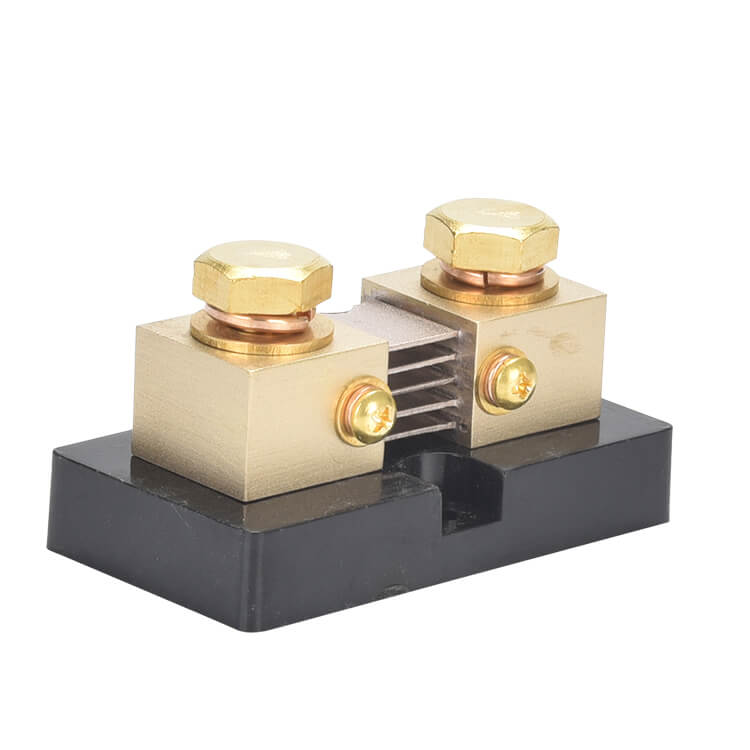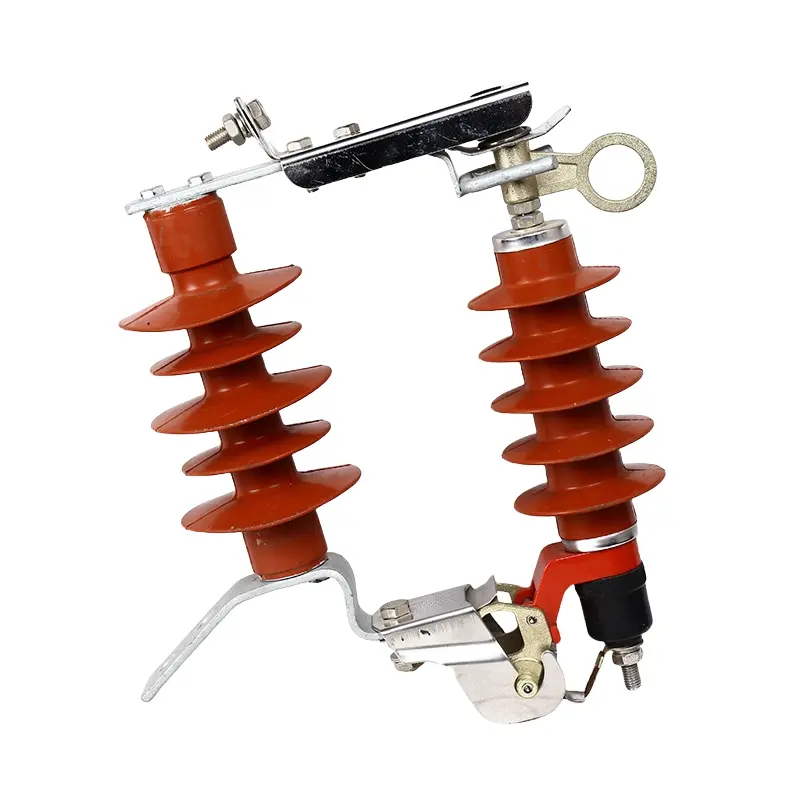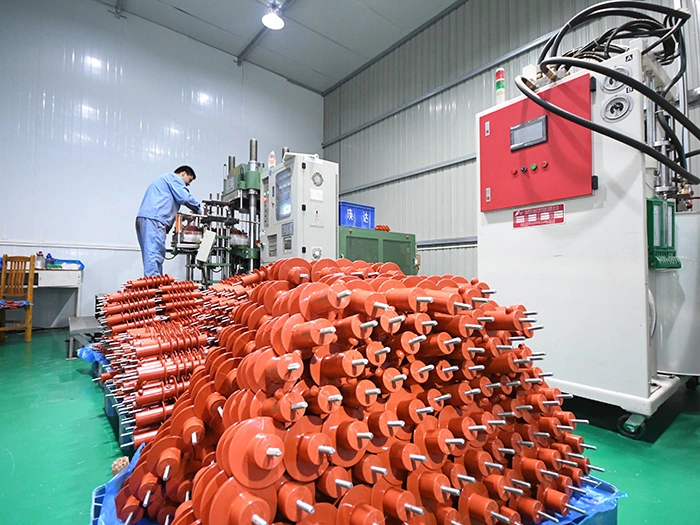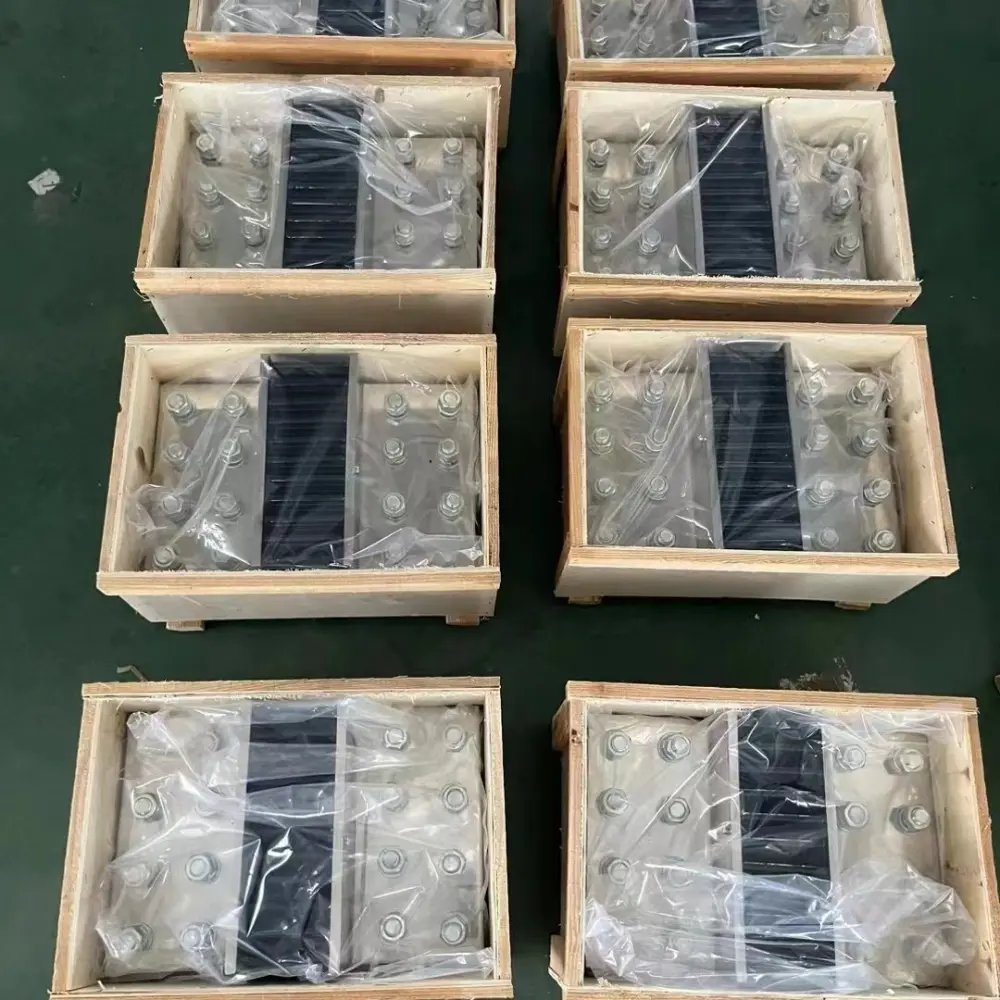In the world of electric vehicles, the incorporation of DC shunts is a significant step toward improving the efficiency and safety of electrical systems. These specialized resistors play a crucial role in accurately measuring high currents and are essential components in the complex electrical setups of EVs. Besides their primary function of current measurement, DC shunts also play a critical role in ensuring the accuracy, quality, and reliability of the electrical systems in these vehicles. As the technology of EVs continues to rapidly advance and become more complex, selecting the right DC shunt becomes crucial. This involves not only considering the technical specifications of the shunt but also its manufacturing quality and the reliability of its source. With the increasing popularity and widespread adoption of electric vehicles, automotive engineers, EV manufacturers, and enthusiasts need to understand the fundamental aspects of DC shunts, from their operational principles to their various types and applications. This article aims to reveal the transformative impact of DC shunts on electric vehicles, emphasizing their vital role in measuring and managing electrical currents, which is crucial for the optimal performance and safety of these modern automotive wonders.
Comprehending DC Shunts
The foundation of DC shunt technology is based on a simple yet highly effective concept: measuring electrical currents accurately by intentionally introducing a known resistance into a circuit. These shunts are designed as precise resistors that generate a small voltage drop when connected in series with an electrical load. This voltage drop is directly proportional to the current flowing through the circuit, allowing for precise current measurements without affecting the overall functionality of the circuit. The selection of material for these resistors is crucial, with manganin, a copper, manganese, and nickel alloy, being a standout choice due to its low-temperature coefficient. This quality ensures minimal changes in resistance with temperature fluctuations, guaranteeing stability and accuracy in measurements even under varying operating conditions. The production of DC shunts is not simply a matter of assembling components but rather embedding reliability and precision into the very core of electrical systems, especially in the demanding and intricate applications of electric vehicles. A thorough understanding of these fundamental aspects of DC shunts is essential in recognizing their crucial role in the complex electrical networks of modern EVs, where precision is not only desired but necessary for efficiency, safety, and performance.
DC Shunts: A Breakdown of Different Types
DC shunts are available in various types.

The wide range of DC shunt varieties is evidence of their adaptability to meet the diverse needs and demands of different industries, including the rapidly growing electric vehicle sector. Out of the numerous shunt options, three types stand out due to their unique features and appropriateness for various purposes:
Wire-Wound Shunts: Renowned for their durability, wire-wound shunts are made by wrapping high-quality resistive wire around a non-conductive core. This design enables them to withstand high levels of current, making them a perfect option for demanding industrial systems and automotive uses, such as the challenging conditions found in electric vehicles.
Manganin shunts are known for their precision. These shunts are created using a blend of copper, manganese, and nickel, and are renowned for their low-temperature coefficient and exceptional long-term stability. They play a crucial role in accurately measuring current in applications that demand high precision, such as in the electrical systems of electric vehicles. Even small inconsistencies can have a significant impact on performance and safety, making the accuracy of manganin shunts of utmost importance.
Solid-ShankShunts: These shunts are compact and effective, made from metal bars or plates. They are ideal for smaller electrical systems or portable devices. When used in electric vehicles, they provide versatility and can be easily integrated into limited spaces, ultimately improving the efficiency and dependability of the vehicle’s electrical system.
Different types of DC shunts offer distinct benefits, tailored to the specific requirements of electric vehicles. These range from managing the large currents in powertrain systems to guaranteeing the accuracy necessary for battery management systems. Familiarizing oneself with the subtleties of these shunt variations empowers automotive engineers and EV makers to choose the most suitable option for their particular needs, ensuring maximum efficiency and safety.
Important Specifications and Features
When exploring DC shunts in the field of electric vehicles, it is essential to take into account a range of important specifications and characteristics that determine their performance and compatibility with different measurement tools and systems. The accuracy class, typically denoted as 0.5%, serves as evidence of the precision provided by these parts, guaranteeing dependable and consistent current measurements. This level of precision is crucial in electric vehicle applications, where accurate current measurement can greatly influence the efficiency and safety of the vehicle.
In addition, the flexibility of DC shunts is emphasized through the various current input choices offered. This enables a customized approach to cater to the distinct needs of various electric vehicle systems, ranging from battery management to motor control circuits. Furthermore, the standard 75mV-rated output makes it even more convenient.
The universality of DC shunts allows for seamless integration with a diverse selection of measurement and monitoring devices, ensuring compatibility across various systems.
The overload capacity of the shunts is a crucial consideration, as it must be able to endure both continuous and short-term overloads to ensure longevity and resilience in the challenging conditions of electric vehicles. This attribute is especially significant in situations where unexpected spikes in current may pose a risk to the integrity of the electrical system.
Moreover, the durability of DC shunts is highlighted by their ability to operate and be stored within a wide temperature range. This guarantees consistent and reliable performance in various environmental circumstances, making them crucial for electric vehicles that are used in diverse climates. These essential specifications and characteristics guarantee that DC shunts not only fulfill the technical requirements of electric vehicle usage, but also contribute to the overall objectives of safety, efficiency, and dependability in this rapidly developing field.
Installing and Taking Precautions
Installing DC shunts in electric vehicles (EVs) requires careful attention to detail to guarantee precise current readings and ensure the safety and durability of the system. Proper placement is crucial as it allows for proper heat dispersion, which is essential for maintaining the shunt’s effectiveness and longevity. This is particularly critical in the confined and compact space of an EV.
The efficient control of heat in the frequently crowded electrical compartments of EVs is crucial for preventing overheating and maintaining the reliable functioning of the shunt in the long run.
It is equally important to reduce the voltage drop at the installation points. Caution should be exercised to prevent adding resistance at the connection points, as this may affect the accuracy of the measurements and potentially impact the efficiency of the system. In the realm of electric vehicles, where even small voltage drops can significantly impact performance and range, it is imperative to maintain minimal resistance at connection points.
In addition, safety measures should go beyond just the physical setup and also consider the operational settings of the DC shunts. A commonly emphasized guideline is to not use more than 80% of the rated current for extended periods, as this can cause excessive strain on the shunt and result in early malfunction or incorrect readings. It is important to follow this guideline in EV applications, where the current flow can vary and be unpredictable, such as during regenerative braking or rapid acceleration. This is essential for the shunt’s durability and the overall safety of the vehicle’s electrical system.
It is crucial to follow these installation and operational precautions for the proper functioning of DC shunts in electric vehicles. These guidelines are not just suggestions, but necessary measures to guarantee the precision and dependability of these vital components. By adhering to these precautions, the EV’s performance, safety, and user satisfaction can be maintained at an optimal level.
Benefits of Utilizing DC Shunts
The integration of DC shunts in electric vehicle (EV) systems offers numerous benefits that greatly enhance the overall performance, safety, and efficiency of the vehicles. The accurate and dependable current measurements provided by DC shunts play a vital role in enabling precise monitoring and management of the electrical currents that pass through different components of the EV. This precise measurement of current is essential for optimizing the processes of battery management, motor control, and energy regeneration, which have a direct impact on the range, performance, and lifespan of the vehicle.
One of the prominent benefits of DC shunts is their cost-effectiveness. With a combination of low cost, precise measurements, and durability, they offer a financially feasible option for current measurement in electric vehicles (EVs). This cost-effectiveness is even more advantageous in light of the continuous endeavors to make EVs more budget-friendly and available to a wider range of people.
The exceptional ability of DC shunts to handle high currents makes them well-suited for the requirements of electric vehicles, which frequently encounter high current situations. This capability guarantees the durability of DC shunts even under strenuous circumstances.
The operational needs of Electric Vehicles (EVs) can be met without sacrificing precision and dependability, ensuring both quick acceleration and efficient battery charging and discharging.
The versatility of DC shunts in the EV industry is evident in their wide range of applications. They are essential in power distribution and integration into charging systems, making them crucial components in various aspects of EV technology. Their easy installation and minimal voltage drop make them seamlessly integrate into EV systems without impacting the vehicle’s electrical performance.
The EV industry favors DC shunts due to their durability and adaptability, as well as their ability to work with current systems. These shunts are crucial in the development of electric vehicles, providing a dependable, precise, and affordable method for measuring current. This ultimately leads to the advancement of safer, more efficient, and more dependable EV technology for the future.
Usage of DC Shunts in Electric Cars
DC shunts are widely used in various applications in electric vehicles (EVs), all playing a vital role in ensuring the precise and effective functioning of these sophisticated machines. The battery management system (BMS) in EVs heavily depends on precise current measurement to maximize battery performance.
To ensure the longevity of the battery and guarantee safety, it is important to focus on performance. The use of DC shunts in BMS applications allows for accurate tracking of charging and discharging processes, which is essential for preserving the health of the battery and optimizing its range.
DC shunts play a crucial role in the powertrain by enabling precise management of electric motors. Through accurate measurement of the motor’s current intake, DC shunts aid in optimizing its efficiency and response, ultimately enhancing the vehicle’s performance and driving experience. This precise tracking of current is also essential in regenerative braking systems, guaranteeing that the highest amount of kinetic energy is transformed into electrical energy and stored in the battery while braking or slowing down.
In addition, DC shunts play a crucial role in the charging mechanism of electric vehicles, accurately monitoring the current flow during the charging procedure. This not only guarantees effective energy transfer but also safeguards both the vehicle and the charging infrastructure from potential overcurrent issues. Moreover, in supplementary systems such as climate control, infotainment, and lighting, DC shunts aid in the efficient distribution of electrical loads, ensuring optimal use of the vehicle’s energy without compromising functionality or comfort.
The versatility of DC shunts and their crucial role in the safe, efficient, and dependable operation of electric vehicles highlight their multiple applications. These shunts are essential in improving battery management, optimizing motor control, and protecting the charging processes, making them indispensable components in the advancement and success of electric vehicle technology.
Buying DC Shunts from China
In China, having a strategic plan is essential when navigating the market for DC shunts, particularly due to their crucial function in electric vehicles (EVs). With China being a center for producing electronic components, there is a wide range of choices available for buyers. However, it is crucial to identify renowned manufacturers such as LEEYD, who are recognized for their top-notch products and widespread international customer base, to guarantee the dependability and effectiveness of the purchased DC shunts.
When considering potential suppliers, it is essential to thoroughly examine the technical specifications of their products to ensure they meet the high standards required for EV applications. This involves verifying elements such as accuracy class, current handling abilities, and the durability of the shunts in various environmental conditions. Adhering to international standards is an important measure of quality and demonstrates the supplier’s dedication to global best practices and the dependability of their products.
In addition to the specifications, it is important to also consider the support and warranty policies provided by the manufacturer. Having reliable technical support can greatly reduce the potential risks involved in incorporating these components into a complicated EV system.
The presence of beneficial warranty conditions adds an extra level of protection to systems, guaranteeing the safety of the investment and ensuring its long-term dependability.
The electric vehicle (EV) industry is constantly changing and progressing, making it beneficial to form alliances with well-regarded DC shunt manufacturers in China. This not only guarantees access to high-quality and high-performing components but also promotes a collaborative effort in tackling the distinctive obstacles of EV technology. By choosing the appropriate supplier, buyers can obtain the necessary components crucial in driving the advancement and triumph of their EV ventures.
Summary
The EV industry requires a balance of innovation and practicality, highlighting the importance of components such as DC shunts. Despite their unassuming appearance, these devices are crucial for accurately measuring electrical currents, which is essential for the safety, efficiency, and performance of EVs. Learning about DC shunts, including their fundamental principles, types, applications, and purchasing factors, emphasizes their essential role in the EV market.
When deciding on a suitable DC shunt, one must consider a delicate combination of technical specifications, application needs, and cost-effectiveness. The process involves more than just picking a part, but rather finding a solution that improves functionality.
The effectiveness and dependability of the automobile are crucial. To achieve this, extensive investigation and a comprehensive comprehension of the vehicle’s electrical systems are required. Furthermore, it is essential to collaborate with reputable manufacturers who not only offer a product but also a partnership.
The electric vehicle industry is constantly developing and pushing the limits of automotive technology, making components such as DC shunts increasingly crucial. These shunts play a vital role in enabling accurate current measurements, which are essential for advancements in EV technology, including battery management and regenerative braking systems. For those involved in the manufacturing, engineering, and innovation of electric vehicles, it is important to recognize and utilize the capabilities of DC shunts to fully harness the potential of their projects and contribute to the creation of sustainable mobility solutions for the future.
To sum up, DC shunts play a crucial role in bridging the gap between electrical engineering and automotive advancement. The process of choosing and incorporating them into electric vehicles reflects the thorough focus on detail and dedication to excellence that define the EV industry. As we envision a future where electric vehicles dominate transportation, the unassuming DC shunt serves as evidence of the delicate balance of accuracy, dependability, and effectiveness that will propel this field forward.





